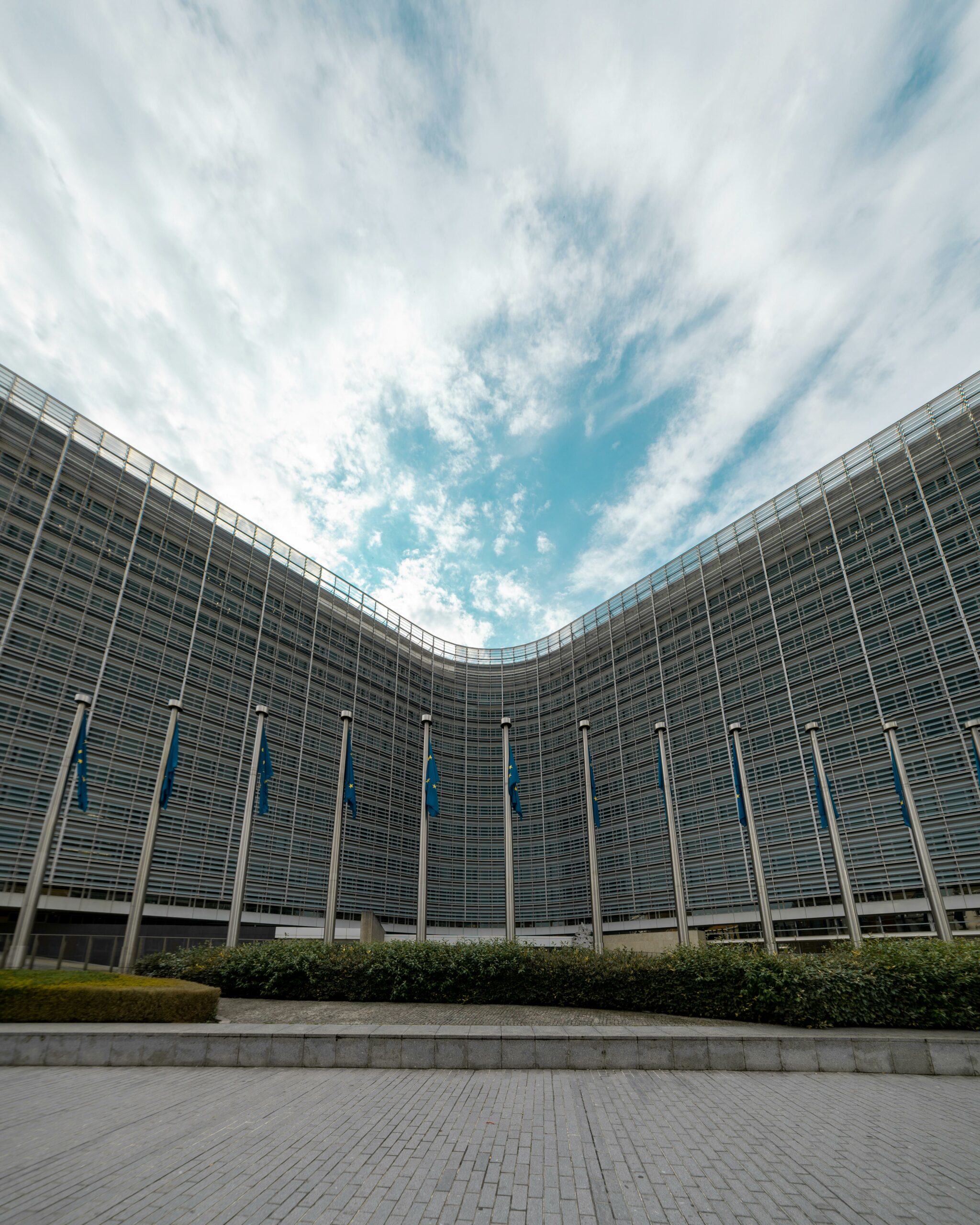Forced labor has been documented in a wide range of green technologies, including solar, wind and lithium-ion battery production. Ksapa is coordinating with investors, buyers and stakeholders using a 5 step approach to design open source guidelines enabling business community to engage meaningfully their business partners and mitigate risks associated to their operations.
1. What characterizes forced labor risks in green technology supply chains?
1. Forced Labor: Quick Reminder
Forced labor is a type of work or service that is performed by an individual against their will, under threat of punishment or coercion. This type of labor is considered a violation of human rights and is prohibited under international law. Forced labor can take many forms, including debt bondage, where an individual is forced to work to pay off a debt, and forced child labor, where children are forced to work instead of attending school. Forced labor can occur in many different industries, including agriculture, manufacturing, construction, and domestic work. It can also occur in the context of human trafficking, where individuals are transported to another country and forced to work against their will.
Forced labor is obviously illegal under international law. The use of forced labor is prohibited by several international conventions and agreements, including the International Labour Organization (ILO) Forced Labour Convention, 1930 (No. 29), which defines forced labor as “all work or service which is exacted from any person under the menace of any penalty and for which the said person has not offered himself voluntarily.” The ILO estimates that there are around 21 million people worldwide who are victims of forced labor, and it is considered a violation of human rights. In addition, many countries have laws that prohibit forced labor, and companies that operate within those countries are also expected to comply with these laws. Some countries have specific laws and regulations that prohibit the use of forced labor in supply chains.
It’s worth noting that forced labor is not only illegal, but it is also detrimental to the workforce and the economy as a whole, as it creates an uneven and unfair competition for companies that follow the law and ethical standards, and it harms the most vulnerable people in society.
2. Forced Labor Risks in Global Green Technology Supply Chains
Forced labor is a major problem in green transition technologies, as it has been observed that some companies involved in green transition technology supply chains are exploiting vulnerable populations by coercing them into providing labor, often at extremely low wages. In addition, forced labor also has an environmental impact, since these laborers are usually not following safety and environmental guidelines. Forced labor can take multiple shapes:
- For instance, in the production of minerals and the case of DRC. The Democratic Republic of Congo (DRC) is a major source of minerals such as cobalt, copper, and tin, which are used in a variety of products, including smartphones, electric vehicles, and renewable energy technologies. There have been reports of forced labor in the mines of the Democratic Republic of Congo (DRC) for instance. Human rights organizations have documented instances of forced labor, including child labor, in the DRC’s mining sector. The forced labor is mostly in artisanal mines, which are small-scale mines often run by local communities or informal groups, rather than large mining companies. These mines are often characterized by poor working conditions and a lack of safety measures. In addition, these mines are also prone to exploitation by armed groups, who force local communities to work in mines, often under threat of violence. It is worth noting that the DRC government, some buyers and mining companies have taken some steps to address forced labor in the mining sector, such as implementing regulations and programs to improve working conditions and to monitor supply chains. However, the problem is ongoing and it’s crucial to continue efforts to combat forced labor in Congo and other regions.
- For instance, in the production of solar panels and the Uighur case. There have been reports of forced labor being used in the production of solar panels. For example, in 2020, the Australian Strategic Policy Institute (ASPI) published a report that found that Uighur Muslims and other ethnic minorities were being used as forced labor in the production of solar panels in Xinjiang, China. The report stated that these workers were transferred from internment camps in Xinjiang to work in factories across China. It’s worth noting that this is not the only report of forced labor in the solar panel industry, addressing a complex issue that is not limited to any specific company or region. Forced labor can occur in any stage of the solar panel production process, from the mining of raw materials to the assembly of the final product. It’s important to note that many companies and organizations are making efforts to identify and eliminate forced labor in their supply chains and implement ethical sourcing practices. This includes implementing regulations, auditing suppliers, and implementing traceability systems to monitor the origin and conditions of the materials used in solar panel production.
Moving Forward Ensuring a Green Transition Free from Forced Labor
Forced labor risks in green technology supply chains can be characterized by the types of vulnerable populations that are at risk, such as those from economically disadvantaged backgrounds or those with limited access to legal protection. Forced labor risks are also affected by factors such as geographic concentration of production, complex and opaque supply chains, and low wages for workers. In addition, the lack of regulatory enforcement of labor laws and inadequate monitoring of labor conditions can further exacerbate forced labor risks. In general, companies and organizations can use various tools and solutions to mitigate the risks of forced labor in their supply chains. These can include:
- Supply chain management software: These tools can help companies track and monitor their suppliers, automate audits and compliance checks, and identify and address potential issues such as forced labor.
- Ethical sourcing platforms: These platforms can provide companies with access to information and resources to help them identify and address forced labor in their supply chains, such as supplier assessments, training materials, and best practices.
- Blockchain-based solutions: Blockchain technology can help companies to create a transparent and traceable supply chain, enabling them to identify and address potential issues such as forced labor, by creating an immutable record of all transactions, and allowing to track the origin of materials.
It’s important to note that, while these tools can be helpful in mitigating the risk of forced labor, they are not a substitute for a comprehensive approach that includes risk assessments, due diligence, and collaboration with suppliers and other stakeholders. Such tools can be of limited value going down the reality of artisanal miners in Congo or facing opaque supply chains not willing to share useful data.
Therefore, first and foremost, there are several steps that companies can take to mitigate the risk of forced labor in their supply chains:
- Conduct Risk Assessments: Companies should conduct risk assessments of their supply chains to identify potential areas where forced labor may be present. This should include an assessment of the laws, regulations, and industry standards in the countries where the company operates and sources materials.
- Implement Due Diligence: Companies should implement due diligence processes to ensure that suppliers and contractors are not using forced labor in their operations. This can include auditing suppliers, monitoring working conditions, and implementing traceability systems to track the origin of materials.
- Establish policies and procedures: Companies should establish policies and procedures to prevent forced labor from occurring in their supply chains. This can include implementing codes of conduct, training programs for employees and suppliers, and implementing processes to identify and address any instances of forced labor that are identified.
- Collaborate and Share Information: Companies should collaborate with other organizations and share information to identify and address forced labor in their supply chains. This can include working with industry groups, NGOs, and government agencies to create and implement standards and guidelines to prevent forced labor.
- Continuously monitor and improve: Companies should continuously monitor their supply chains and make improvements as needed. This can include tracking supplier performance and taking corrective actions if forced labor is identified.
It’s worth noting that forced labor is a complex issue that requires a multi-faceted approach to be effectively addressed, and it’s important that companies work with their suppliers and other stakeholders to address the root causes of forced labor.
Collaborative Activities Encouraging Green Transitions Free from Forced Labor
Ksapa and a group of founding member companies are joining efforts to explore 3 aspects of forced labor in the solar panel and the EV supply chains: 1/ clarify supply chains and forced labor hotspots, 2/ clarify regulatory expectations, 3/ design concrete due diligence toolkit. This initiative does not intend to target any specific region or country. Instead, it intends to provide a more holistic approach embracing multiple forms of forced labor as they may occur accros targeted supply chains, and understanding that the geopolitical dynamics reshuffling global supply chains as we speak will anyway generate or displace risks from some geographies or value chain hotspots to others.
Ksapa will therefore combine several ways to assess the geographic concentration of sensitive mining and manufacturing productions, such as those that have a higher risk of forced labor or environmental damage. Some of the methods that will be used include:
- Mapping and GIS analysis: The Ksapa platform is using geographic information systems (GIS) and mapping tools, using visual representations of supply chains and identifying areas where sensitive mining and manufacturing productions are concentrated. This will help companies to identify high-risk areas and target their efforts to mitigate risks.
- Risk assessments: The Ksapa platform is conducting risk assessments to identify the level of risk associated with different regions and production methods. This includes assessing the laws and regulations in place, the industry standards, and the working conditions in the region.
- Data and information analysis: The Ksapa platform is using data and information from a variety of sources such as reports from NGOs, government agencies, and industry groups to identify the geographic concentration of sensitive mining and manufacturing productions.
- Stakeholder engagement: The Ksapa platform is engage a variety of stakeholders such as suppliers, NGOs, multilateral agencies, and government agencies to identify the geographic concentration of sensitive mining and manufacturing productions. This will likely include, at a later stage, working with local communities to identify and address issues, and conducting supplier assessments and audits.
- Continuous monitoring: The Ksapa platform will continuously monitor these supply chains, including through regular audits, supplier assessments and risk assessments executed by its member companies, to identify new risks and changing conditions in the regions where they source.
It’s worth noting that assessing the geographic concentration of sensitive mining and manufacturing productions is an ongoing process that requires regular updates, and it’s important that companies work with their suppliers and other stakeholders to address the root causes of forced labor and other issues.
Conclusion
Ksapa is a strategic global platform designed with these very questions in mind. Our network of 150+ practitioners across the globe work with business and investors to design frameworks, policies and collaborative initiatives on the ground to bring risk mitigation solutions at scale. Get in touch to discuss the best way for your organization to address multilateral pressures and regulations, ultimately driving real-world impact across your value chain.
Author of several books and resources on business, sustainability and responsibility. Working with top decision makers pursuing transformational changes for their organizations, leaders and industries. Working with executives improving resilience and competitiveness of their company and products given their climate and human right business agendas. Connect with Farid Baddache on Twitter at @Fbaddache.






